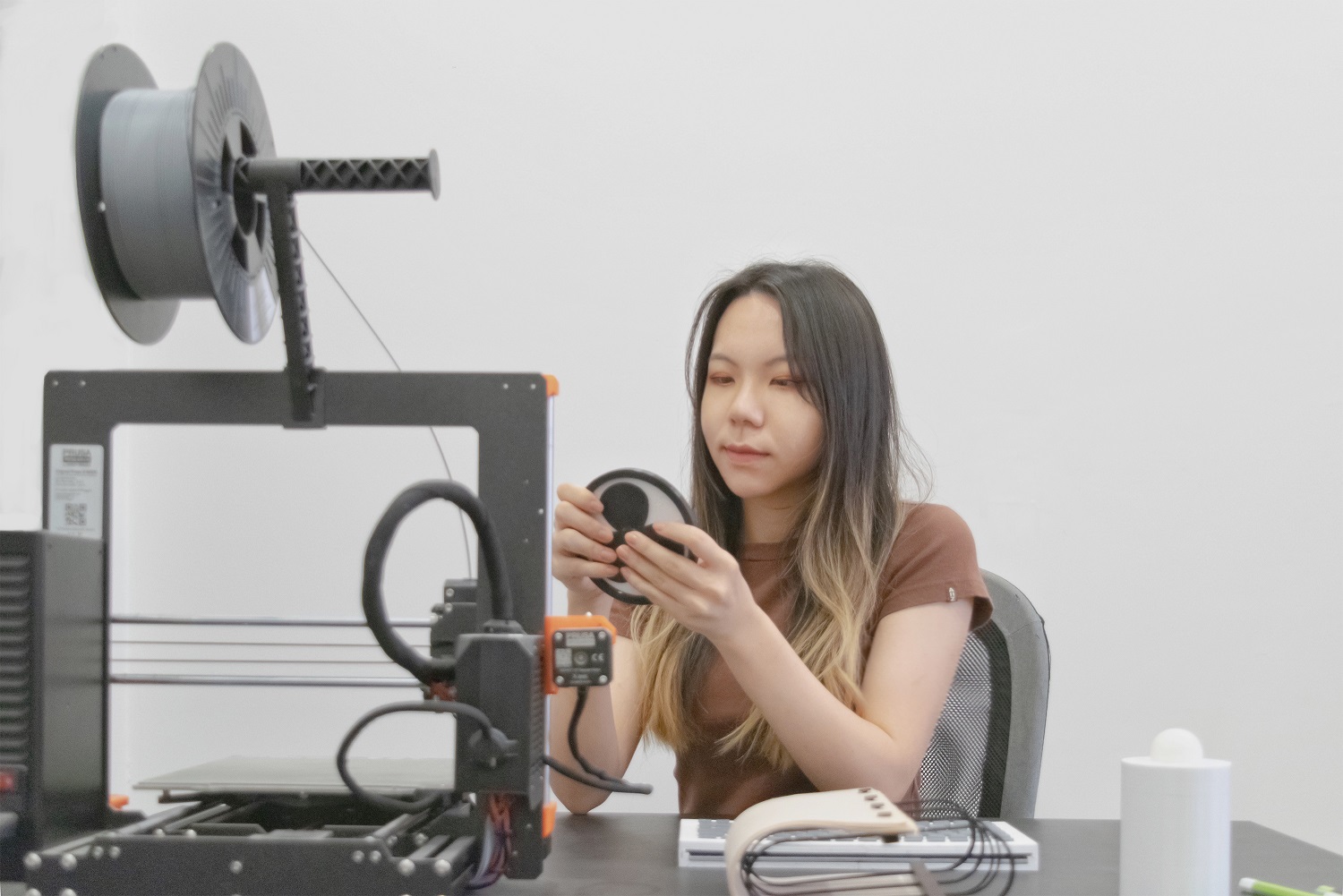- Academics
- Admissions & Enrollment Services
- Research
- Academic & Creative Spaces
- Strategic Partnerships
- Our Impact
- Student Affairs
- Campus & Community
“We need to be taught to play, just as we are taught to work”
June 9, 2021
Categories

Alumna’s research is a timely and much-needed reminder that by nature, our brains need to be idle to be creative
“To work or not to work?”
“When can productivity be unproductive?”
“Busy versus idle?”
Questions that have been explored by researchers ranging from specialists at Harvard Medical School, through organizational psychologists, to some of the last century’s prominent philosophers, now form the topic of investigation by Yeon Geong Hwang, a VCUarts Qatar MFA in Design student.
In her thesis titled ‘The Default’, Hwang examines the relevance of play as a necessity to the lifestyles of human beings – irrespective of age and gender. Referencing work published by Dr. Srini Pillay, a psychiatrist at Harvard Medical School, and Bertrand Russell, the British Nobel Laureate and polymath, Hwang discusses the naturally-engineered need for the human mind to have regular intervals of time when they can let their mind idle or wander, in order to resume work with increased mental focus and creativity.
The Class of 2021 MFA alumna – who also completed her BFA in graphic design at VCUarts Qatar – highlights the positive changes that happen in the brain when it goes through a period of rest or contemplative idleness
“Have you ever wondered why there are very few toys and games for people above the age of 12, in toy shops and stores?” asks Hwang. “Though it is valid that many adults may discover different ways of playing, we cannot deny that the gap of toys at our age is symbolic – it is a direct reflection of our tendency to assume that as adults, we need to be working all the time, and ignore and depreciate the value of idleness in our lives.”
According to Hwang, our brains need a balance of purpose, and lack of purpose – the latter which happens when our minds are idle or when we play. She cites evidence-based research in support of her argument.
“Research conducted by Dr. Srini Pillay, a psychiatrist at Harvard Medical School, shows how our brains are wired for focus and un-focus to work together,” she explains. “When a person enters the ‘un-focus’ state of mind, the Default-Mode Network (DMN) in the brain is activated. This state is triggered when we enter daydream mode and drift off into thought.”
In 1970, neuroscience researchers discovered that the ‘un-focus’ mode of the brain carries heavy amounts of mental neural activity, consuming 20% of the body’s energy while at rest. Today, though the digital era threatens the ‘un-focus’ mode, the mental neural activity that happens during such moments of un-focus, explains why we get good ideas at random moments in our lives, such as in the shower. In other words, when you turn the ‘focus’ function of the brain off, the DMN will trigger the brain to retrieve memories and link ideas, which significantly boosts creativity.
Hwang’s topic of investigation, incidentally, emerged into the spotlight under the COVID-19-induced work-from-home scenario faced by most employees the world over.
“Even prior to the pandemic, we were already heading to a very play-less and work-full lifestyle. The pandemic brought it out into public attention,” Hwang notes.
Hwang’s thesis includes a short film; a projected narrative on physical space, crafted around an area which we can identify with – our workstations. The narrative, built using the Theatre of the Absurd style of expression, utilizes the familiarity of day-to-day objects in and around our work desk, to trigger thought on the meaning of continuous work.
Her investigation drew on direct observation, participant feedback, published research – and her own experiences.
“I am a passionately studious person, and this meant I was working all the time except when I was eating or sleeping,” she says. “During my work, I also noticed that I would need time to be alone by myself, to recover from the intensity of work – from the mental saturation that comes with constantly using digital media – and even from my social life. I discovered that I needed at least a good half hour of random, creative contemplation to give me the energy to reboot.”
However, the feeling of mental rejuvenation she felt was often negated by the weight of guilt that surfaced when she rested for longer periods. Not any more, though. And, her new-found confidence is reflected in her research which she hopes will make people around her reconsider their relationships to play, and mental un-focus.
“Our working population will benefit from studying and gaining awareness about the relationship of play and un-focusing, with work,” she says. “Those in positions to directly care for or impact other people’s mental health – whether they’re heads of organizations who set the standards for organizational behavior and work time, or psychologists offering direct counselling to those experiencing burn-out – need to realize the benefits of balancing work with time to let our minds wander or be just be idle.
“As adults, we should be taught to play, just as much as we are taught to work.”

